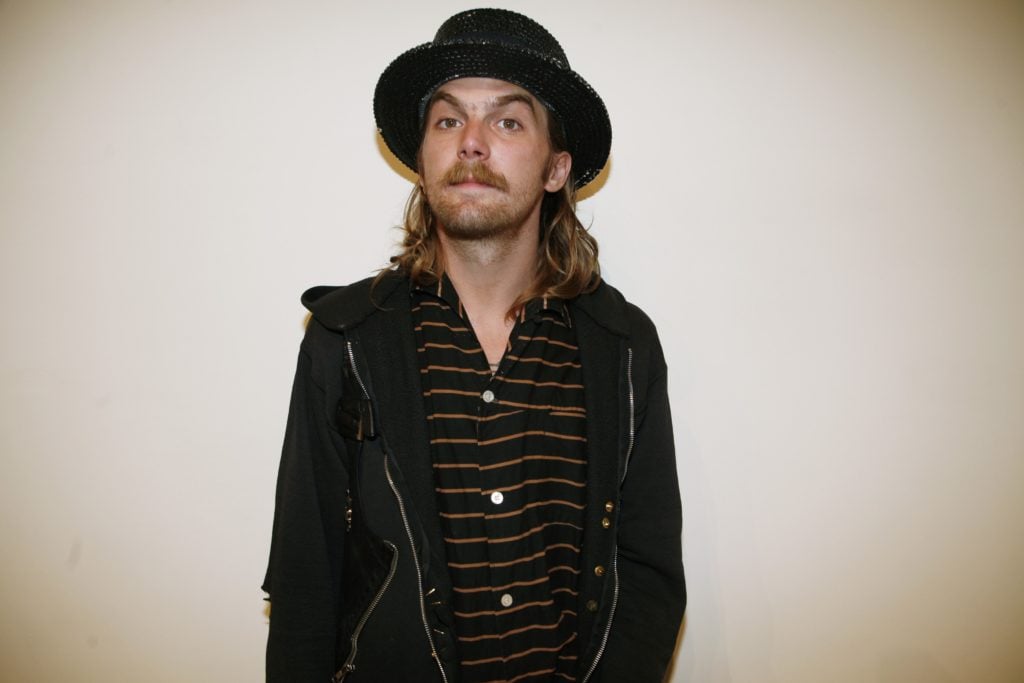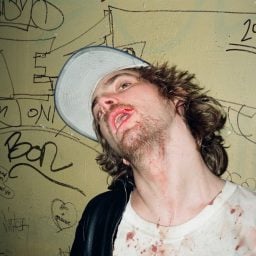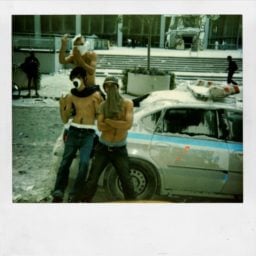When Dash Snow died of a heroin overdose in room 11 of the boutique New York hotel Lafayette House, in July 2009, he had already attained in his nearly 28 years on earth the kind of fame most artists could only dream of in a lifetime. His outlaw scruff look is still influencing the misfit skaters, artists, and graffitos that haunt Chinatown dives. And when looking southwest from First Avenue and 1st Street, one can see a large portrait of Snow’s face hovering saint-like on a building in the heart of the Lower East Side. A new documentary on the artist’s wild life, titled Moments Like This Never Last, has become one of the must-see art films of the year.
Snow also left behind a vast archive of work. His final months were intensely productive, a period when drug-fueled sessions at his 138 Bowery studio (the building was later sold to WeWork founder Adam Neumann and demolished to build a hotel) led to a large body of installation works and signature collages. And though Snow’s archive has aged quite well—the debauched Polaroids and the conspiracy-addled collages and the self-portraits titled “Bin Laden Youth” seem of a piece with the last days of Trump—they have mostly languished in storage, unrepresented by a gallery since his death.
Now, Dash Snow’s estate has found a home. The artist’s legacy will be represented by Morán Morán, the gallery run by brothers Al Morán and Mills Morán out of an expansive space on La Cienega Boulevard in West Hollywood. The first show of Snow’s work, an exhaustive survey curated by Matthew Higgs, will open in September 2021.
The estate is run jointly by the artist Dan Colen, a close friend and collaborator of Snow’s, and Jade Berreau, the model and artist who was Snow’s companion in his final years. Berreau and Snow had a daughter together, Secret, who was two years old when Berreau found Snow’s body surrounded by empty heroin bags and a spent bottle of rum in the $400-a-night hotel room. Berreau wanted to find a gallery to handle the estate, which will offer the in-demand work for the first time in years to institutions and collectors, an effort to preserve her late partner’s legacy beyond the stories of his antics and untimely demise.
“It is hard, as it’s part of what’s left of him, and I also have to make sure that his daughter has some things that she can hold on to,” Berreau told Artnet News. “But at this point it’s most important is to bring awareness to the importance of his work, and have it placed in places that make sense, and have him be part of the conversation of the market. It’s important to get it out in the world.”
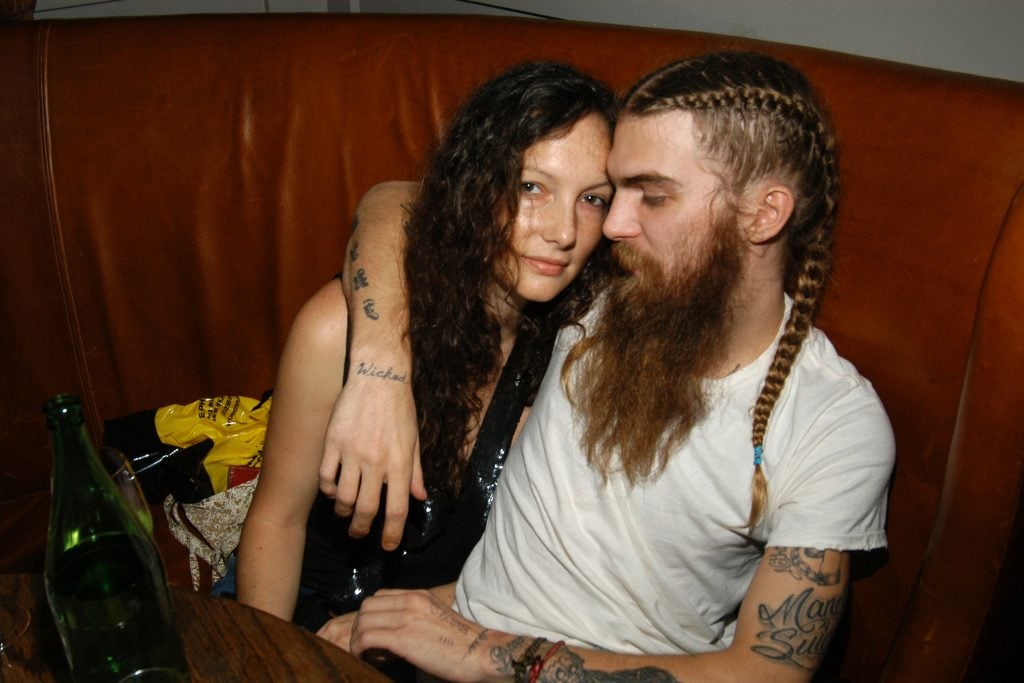
Jade Berreau and Dash Snow on September 6, 2007. Photo by A. Scott/Patrick McMullan via Getty Images.
Taking Their Time
The representation comes after a decade in which collectors and critics have developed a growing interest in Snow’s work, even as in-person opportunities to see it have been few and far between. A 2012 show at Snow’s Berlin gallery, Contemporary Fine Art, set the stage for the artist’s lone institutional show to date, at the Brant Foundation in 2016. (Peter Brant, who is a deep collector of Colen’s work, happened to be passing through Berlin with Julian Schnabel when he encountered Snow’s show and was inspired to stage his own at his private museum in Greenwich.)
Previously, Colen’s studio handled Snow-related loans and cataloging, but the formation of the estate will bring the artist’s work to a new generation of people more familiar with Dash Snow the myth than Dash Snow the artist.
Both Morán brothers knew Snow and showed him during his short career. They also represent several of Snow’s contemporaries in the so-called “Bowery School,” including Terence Koh and Agathe Snow (who is Dash’s ex-wife). In an interview, Al Morán revealed that the first work ever sold at the gallery, back when it operated under the name OHWOW, was a work by Snow, in 2008.
“I started meeting these guys and girls around 2005, well before we opened up the gallery,” Al Morán said. “That was my education in art, it was through their lens—I had no idea what art was, and they introduced the art world to me. Now it’s like it all came full circle.”
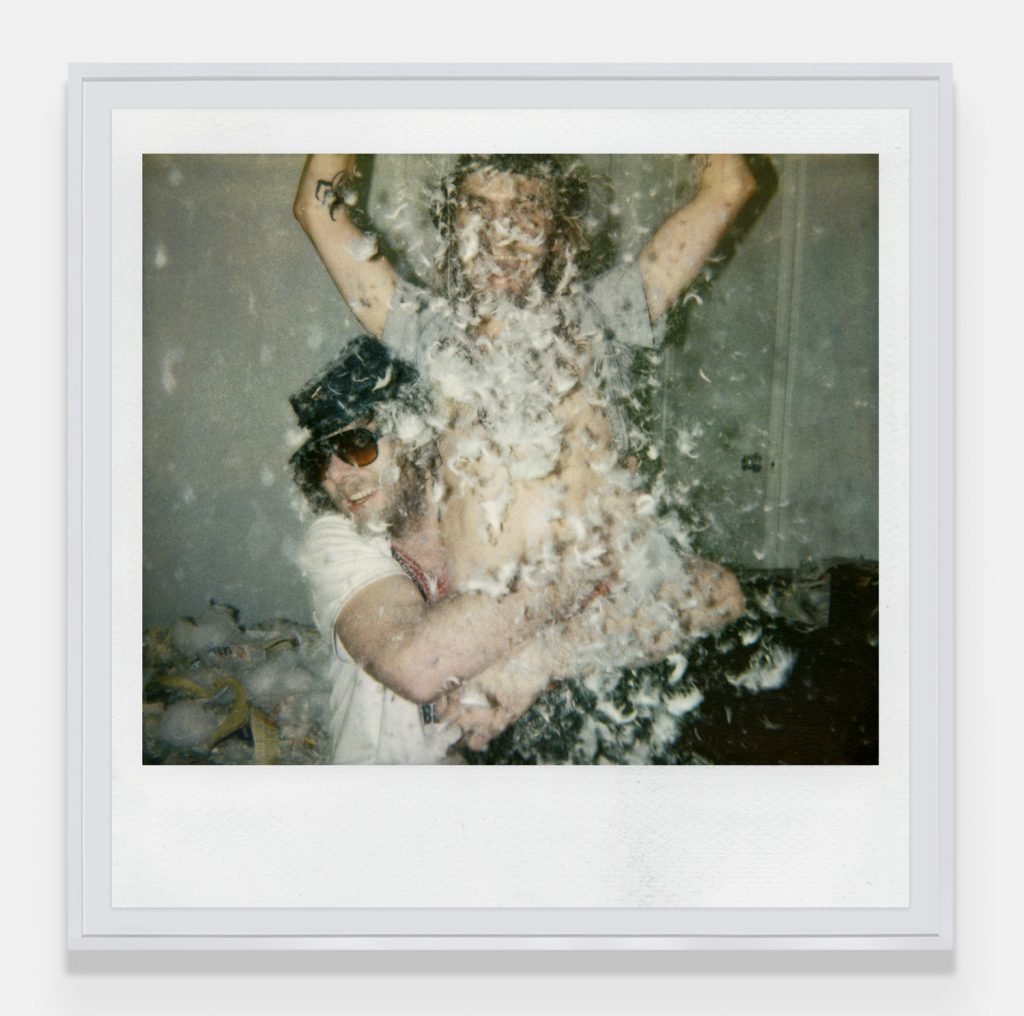
Dash Snow, Untitled (Polaroid #5) (2005). Courtesy of Moran Moran.
The Icon Vs. the Art
The new partnership will shine a light on Snow’s prodigious output, which, while celebrated, was often overshadowed by the swath he cut through south-of-Houston circles and his snort-and-shoot tabloid-chronicled excesses. Many associate Snow with the Hamster’s Nest parties he would throw with Colen and their friend Ryan McGinley. During these soirees, they would fill a hotel suite with phone book shreddings and ingest enough cheap beer, decent whiskey, good cocaine, and ecstasy of unknown origin until they—as Ariel Levy phrased it in her classic New York magazine cover story on the trio—felt like hamsters.
There was also the matter of Snow’s family. He was born into art-world royalty as a grandson of Christophe de Menil, an heiress to the Schlumberger oil fortune whose parents were pioneering patrons in Houston and New York. They also founded the Dia Art Foundation. When one of the Hamster’s Nest parties was staged as a performance at the gallery Deitch Projects, Dash brought his grandmother to indulge in all its accoutrements. This sort of thing confused people.
“In a way, we saw an opportunity to recontextualize the work,” Colen said. “I really think that Dash is a performative kind of artist—the objects he made are not static, the cauldron continues to swirl, even today—but he’s misunderstood on so many levels. He was very charismatic but also a very fringe and androgynous character. He was mythic in a way, in life and then in death.”
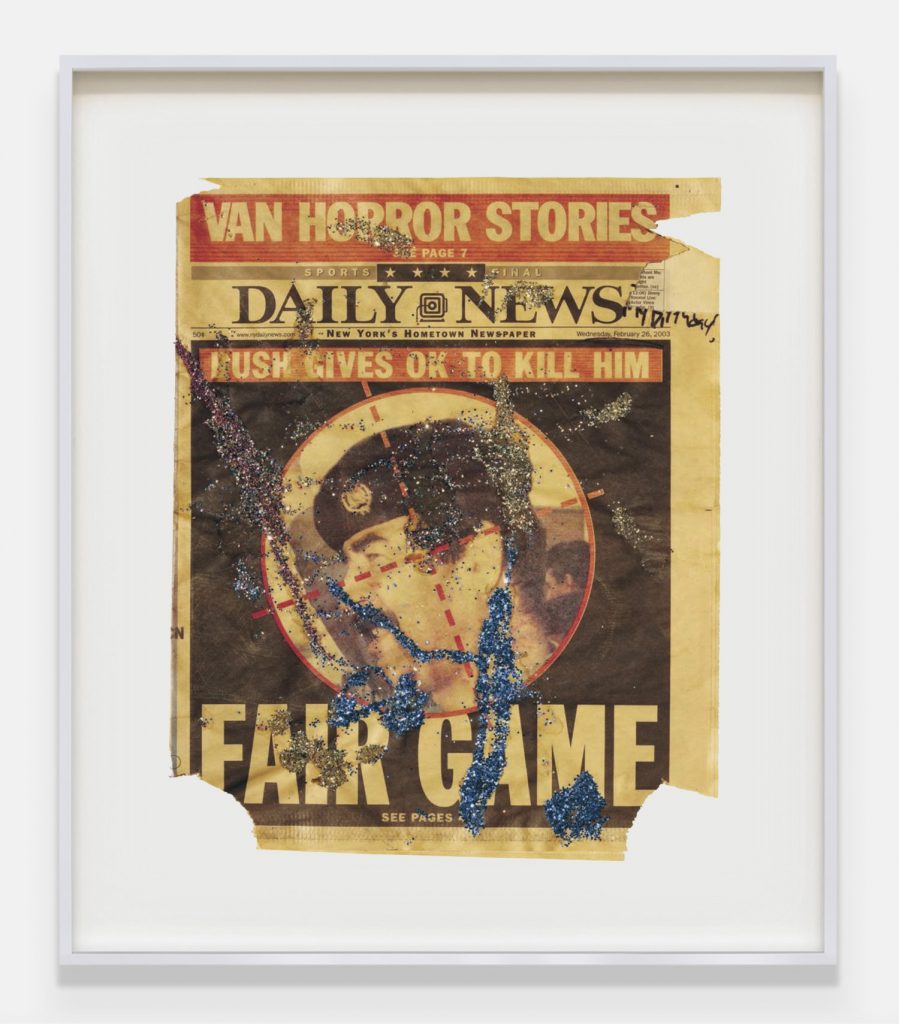
Dash Snow, Untitled (“Fair Game) (2006-07). Courtesy of Moran Moran.
Pushing Back Against Authority
Now the focus will be on the work, which Colen says will resonate with the public even more after four years of a lie-spewing president who dug deeper into the forever war-fighting, America-first mindset that Snow drew from during the Bush era. This reading of the work was at play in the 2015 show at the Brant Foundation, where viewers encountered Snow’s different modes: Polaroids of parties studded with paraphernalia and genitals, collages of New York Post headlines about terrorism and police brutality, films shot with wild abandon, assemblages dedicated to his daughter. At that point, Donald Trump had been leading in polls for the Republican primary for just over 100 days.
“The erosion of capitalism and the erosion of democracy, and this surveillance culture, that was a huge thing for Dash,” Colen said. “And this thing about villains and heroes, about plagues, and about secret powers that kind of move and control things—that’s everything he made stuff about. It’s not a coincidence. This has been happening. He couldn’t bear it as it was materializing, the way in which it was coming to be in 2005 and 2006.”
“The work is so timely right now,” Al Morán said. “Dash was pushing back against this idea of authority—the police state, the surveillance state. A lot of things he was pushing against have become reality.”
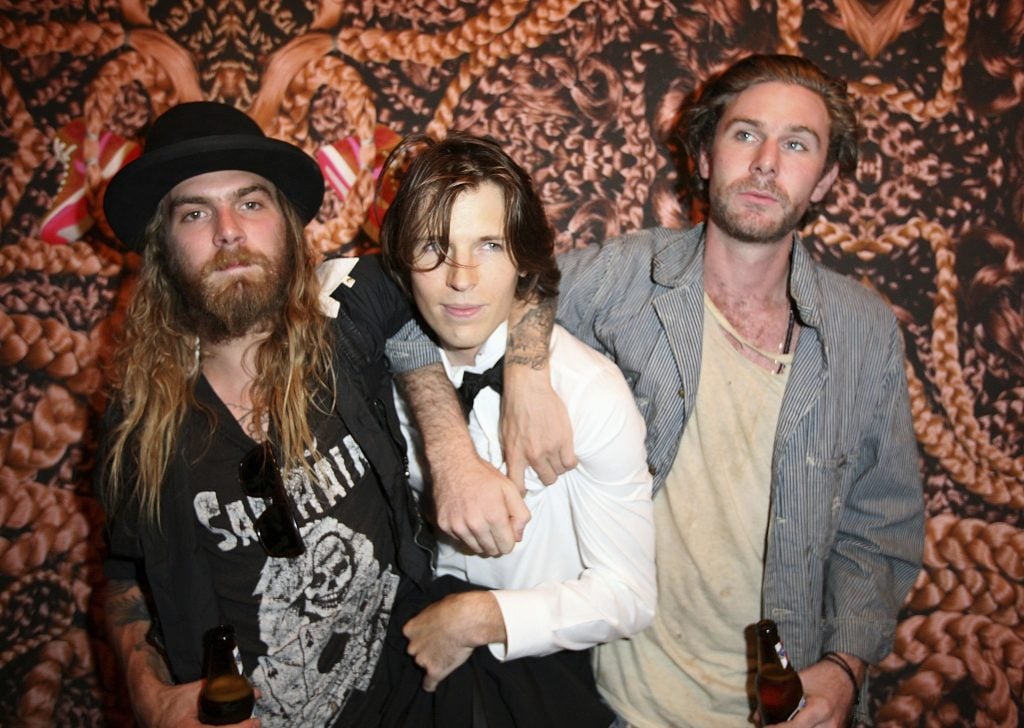
Dash Snow, Ryan McGinley, and Dan Colen attend Nike Women’s Spring 2007 Footwear. Photo by Chad Buchanan/Getty Images.
A New Perspective
The shows staged since Snow’s death grappled with his untimely loss, featuring input from friends and colleagues such as Berreau and Colen, as well as fellow artist Hannah Liden and Blair Hansen, the founding director of Snow’s archive. Now, Morán Morán wants to bring in new voices, such as curator Matthew Higgs, to bring “in different perspectives that don’t necessarily have the emotional perspective,” Al Morán said. “Matthew met Dash, but he wasn’t part of that scene.”
While most solo shows during Snow’s lifetime sold out—he had several at Contemporary Fine Art in Berlin, Peres Projects in Los Angeles, and Rivington Arms in New York—Snow would often keep work for himself. Mills Morán confirmed that there is “a lot more work than we thought there would be,” allowing them to reintroduce Dash Snow back into the commercial ecosystem deliberately without flooding the market.
Mills Moran is particularly excited to bring the work to collectors who have emerged in the past decade. “There’s a new set of eyes who have never been exposed to the work in a real way,” he said.
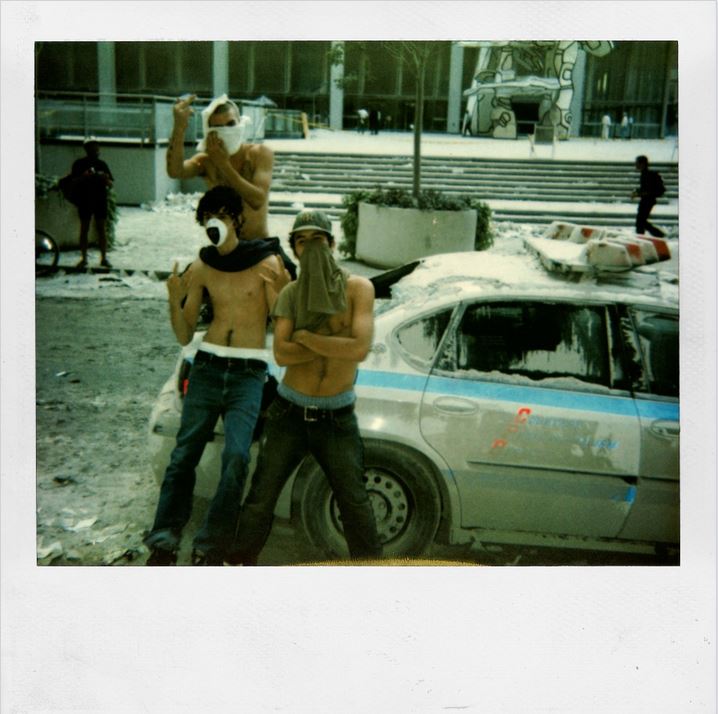
Dash Snow, Untitled (Polaroid #17) (2005). Courtesy of Moran Moran.
Under the Influence of Dash
Colen, who now shows with such powerhouse galleries as Gagosian and Lévy Gorvy, said he hopes that Snow’s work will inspire a new generation of artists to push boundaries—surrounding taste, sex, drugs, violence, and political correctness—that the artist was never afraid to barrel through. Colen admitted that Snow’s New York City was one we may never get back—but it can still provide a blueprint.
“We’re living in a fucking crazy world, and there is amazing art being made, but so much of it doesn’t engage in an immediate way with urgency into this world that we live in,” Colen said. “We’re in a very strange moment and there’s a need for his spirit, and his ethos, but it’s not prevalent. You see a younger generation searching for it, but there’s something very unique about that moment.”
Berreau is looking forward to a day when the work can simply be present once again in a downtown populated by kids who bear his influence, consciously or not.
“I did speak to young twenty-somethings who saw the documentary and said to me, ‘I didn’t know how influential he was,'” Berreau said. “They didn’t realize that what they’re already doing is a continuation of what Dash had done. Had that not existed, their playground would be a very different place.”
